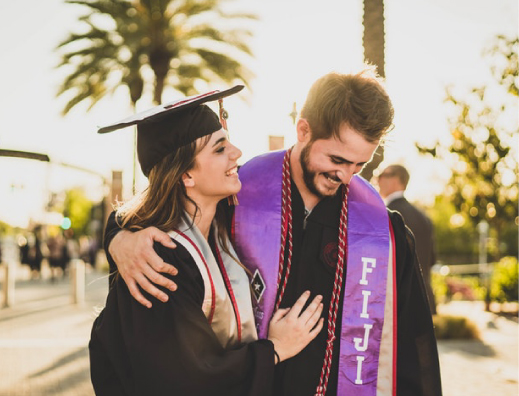A levels, AAB
You do not need an A level in History of Art.
Access to Higher Education Diploma, Obtain Access to HE Diploma with 36 credits at Distinction and 9 credits at Merit or higher
BTEC National Extended Diploma, DDD
Cambridge Pre-U, D3, D3, M2
European Baccalaureate, 80%
International Baccalaureate, 35 points
UAL Level 3 Extended Diploma in Art and Design, Distinction. We will also consider other qualifications from the University of the Arts London in different specialisms, at Level 3 or higher.
International foundation programme, Foundation Certificate from our International Pathway College or an appropriate alternative.
If English isn't your first language you may need to provide evidence of your English language ability. We accept the following qualifications:
IELTS (Academic and Indicator), 6.5, with a minimum of 6.0 in each component
C1 Advanced and C2 Proficiency, 176, with a minimum of 169 in each component
Duolingo, 110 overall, with a minimum of 100 in each component
GCSE/IGCSE/O level English Language (as a first or second language), Grade C
LanguageCert International ESOL SELT, B2 Communicator High Pass with a minimum score of 33/50 in each component
PTE Academic, 61, with a minimum of 55 in each component
TOEFL, 87 overall, with a minimum of 21 in each component
Trinity ISE III, Merit in all components
This innovative degree builds on our reputation as one of the UK's leading art history departments.
You'll study the history of art which will be invaluable as you also develop skills in curating galleries and art museums. You will also be able to take part in field trips to see exhibitions and art objects.
As part of the course you'll have the chance to plan your own exhibitions: both in a group project and in placement with an arts institution that you'll undertake during your second year. Both these experiences give you the opportunity to experience a working environment directly related to your studies.
More Info: Click here
Year 1
In your first year you'll study a range of modules that will develop your skills in art history and cover a range of approaches to curating art museums. You can also choose to study a language module, several of which are specifically designed for art historians.
With our modules you'll visit works of art and architecture in York and beyond to study them first hand, and you'll explore the material nature of works and learn to describe, analyse and interpret the visual and material qualities of a wide range of media. You'll learn to challenge commonly held assumptions, and develop your skills for literary, critical and rhetorical analysis. You'll be introduced to the history and current practice of art curation. You'll work with case studies and texts and learn about relevant methodologies and conceptual problems, and will critically assess the collection and display of visual objects.
You'll take a selection of modules, examples of which may include:
Approaches to Curatorial Practice
Objects in Focus (Curating)
The Art of Describing
The Materials of Art and Architecture
Theory for Art Historians
You'll also have a choice to study another module from one of the following examples:
Transmissions and Connections
Learn a language - you have the chance to study a general language module, including medieval or classical Latin, Arabic, Chinese, Italian, Modern Greek and many others. You can also study specialist courses for Art Historians that build reading skills in French, Italian or German.
Year 2
In your second year you'll be able to choose from modules across a wide historical, geographical, and theoretical range. The emphasis will be on learning to think about exhibitions and displays.
You'll undertake a curatorial internship which is a placement with an arts institution which allows you to practise the skills you've acquired and to develop your own curatorial interests.
You'll also take part in a group project to plan an exhibition. This module is taught in collaboration with one of our established museum partners, and you'll have a chance to familiarise yourself with their collections and their spaces. You'll focus on a particular display project or exhibition and explore the full process of developing an exhibition, including object selection and arrangement, the production of interpretive texts, catalogue conception, audience analysis, marketing, fundraising and more. You'll experience at first hand how curatorial theory intersects with the practical demands of planning an exhibition.
Core modules
You'll take core modules that develop your curatorial and exhibition skills and knowledge:
Curatorial Internship
Group Exhibition Project
Seminar option modules
You'll also choose seminar modules that allow you to study certain time-periods or types of art in more detail. There will be restrictions on which modules you can choose, to ensure you study a sufficient amount of curatorial material. Modules change to reflect the latest research and developments but will include a range of interesting subjects from the medieval to the contemporary.
You'll take a selection of option modules, examples of which may include:
Action/Re-action: Live Art, Performance & Participation
Art in Venice from Bellini to Titian
Casts and Cultures: the Crystal Palace, Sydenham
Image and Icon: Representing the Sacred in the Early Medieval World
Image Controversies and Iconoclasms
The Italian Avant-Garde
The Power of the Real in Seventeenth-Century Spanish Painting and Sculpture
The Rise of the Print in Europe, 1400-1800
Year 3
In your third year you'll choose modules that allow you to study a time period or type of art in significant detail. There will be restrictions on which modules you can choose, to ensure you study a sufficient amount of curatorial material. Modules change to reflect the latest research and developments.
You'll also work on your 7,000-8,000-word dissertation. This will give you a chance to explore an interesting topic in significant detail, and must have a significant curatorial aspect.
Special subject modules
You'll take a selection of special subject modules, examples of which may include:
Architecture and Politics in Stuart England c.1603-1688
Art Law for Art Historians
Illuminating the Bible 1200-1500
Innovations in Northern Renaissance Art
Journeys, Histories, and Methods of Display
Mirrors & Screens: The World of Andy Warhol
Monuments of the Islamic World: Innovation and Change from Spain to India
Stained Glass in the Great Church c.1170-1350
Victorian Art

Recent graduates from the department have gone on to roles that include:
Curator
Gallery director
Conservation officer
Art consultant.
They've worked for a range of organisations including:
National Museum of Wales
Museums Sheffield
Sotheby's
Christie's
BBC.

Insurance - Single: 300 (£) per year